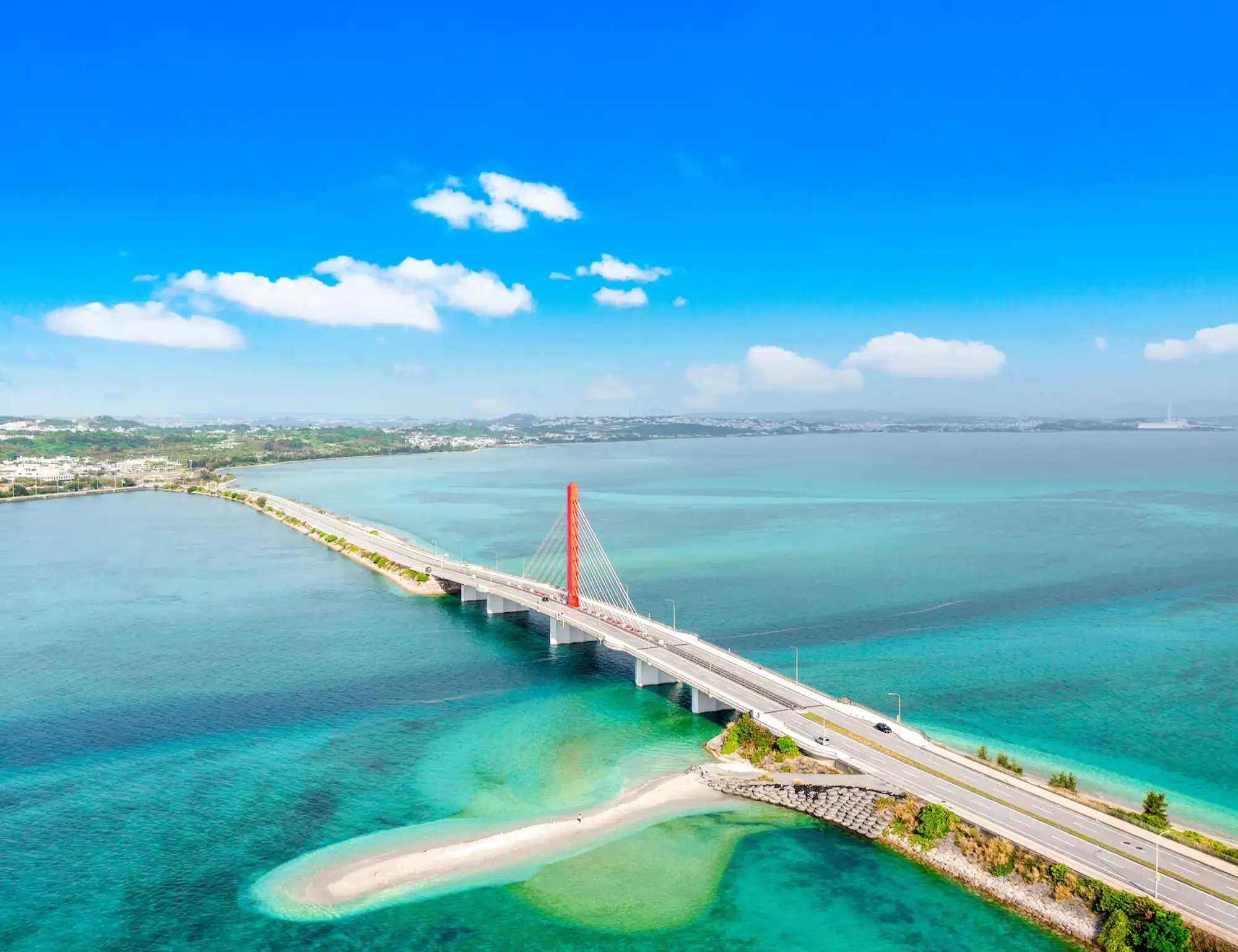Book with Confidence: Enjoy peace of mind — your 20% deposit is fully refundable up to 60 days before departure. See terms & conditions.
Guided Essence of Shikoku Bike Tour
From the iconic cycling in Shimanami Kaido to the historic city of Matsuyama and beyond, this Shikoku bike tour offers an unforgettable journey through the heart of Shikoku. Shikoku may be the smallest of Japan's four major islands, but it is a cycling lover's paradise. Shikoku is where you head to when you're looking for the best biking routes, the best preserved castles, the best sake and the best udon noodles in all of Japan. Add to it all vibrant local festivals, lively local markets selling fresh farm produce and local crafts, and some of the most pristine scenery in Japan, and Shikoku emerges as a destination you don't want to miss.
Guided
casual hotels
Onomichi | 17:00 hrs
Konpira
moderate to challenging
67 km / 42 mi
6
Min. 4, Max. 12
Hiroshima International Airport (HIJ)
Takamatsu Airport (TAK)
Highlights
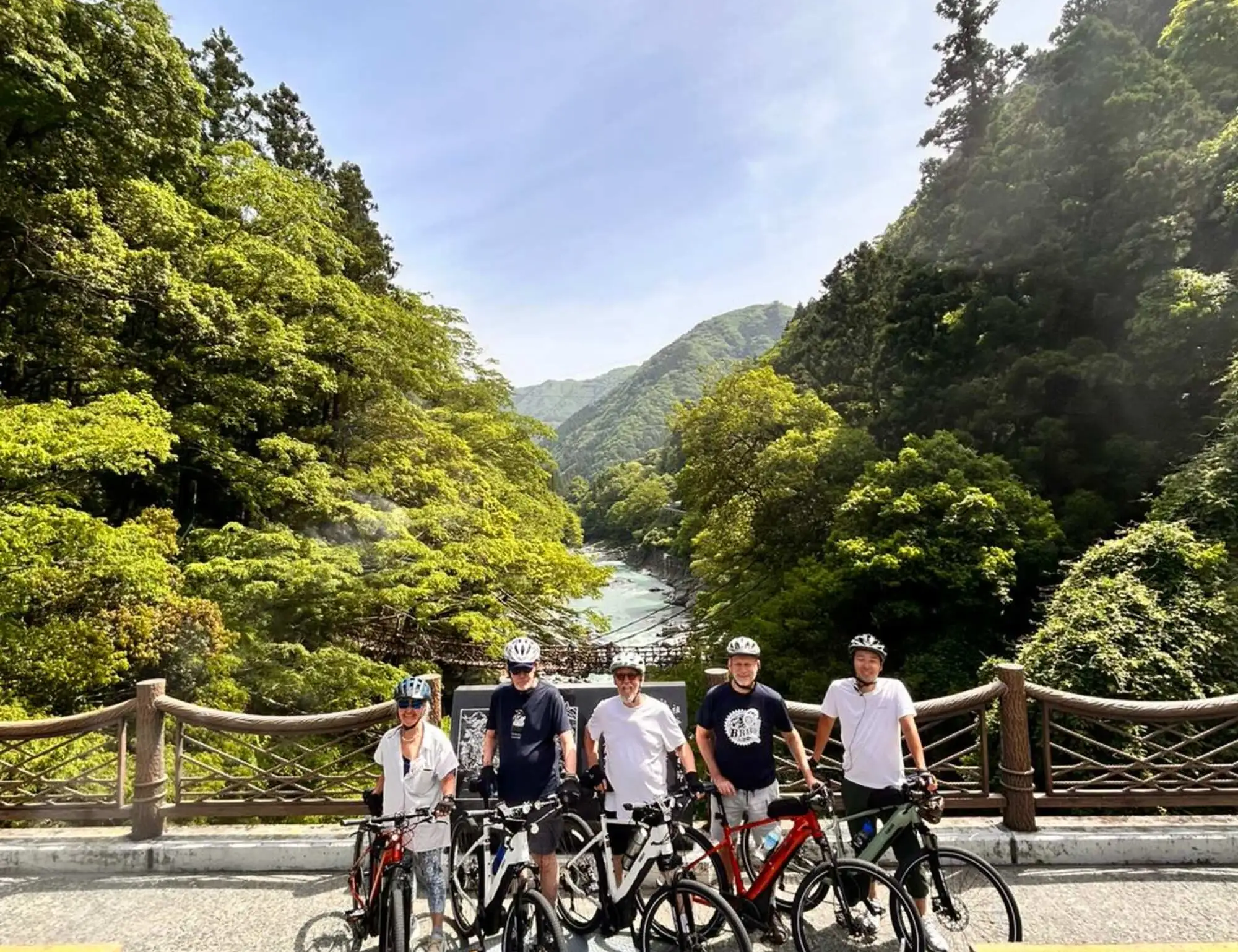
Cycling Shimanami Kaido
Shimanami Kaido is, quite simply, one of the most breathtaking coastal bike routes in the world. This is a 70-km biking track that passes through six islands in the Seto Inland Sea. On offer are gorgeous ocean views, winding roads through forest-covered mountains, sweet-smelling orchards of oranges and lemons, and the chance to savor a variety of specialty juices and citrus products along the way.

The Oldest Onsen in Japan
Onsens are traditional Japanese inns built around therapeutic hot springs. On any Japan tour, onsens are a highlight. However, the Dogo Onsen in Shikoku is special, for it is the oldest documented onsen in Japan, being well over 1,000 years old! Built in the traditional Japanese ryokan style using wood and consisting of a maze of pathways, rooms, and staircases, this onsen receives frequent visits from the imperial family of Japan itself.
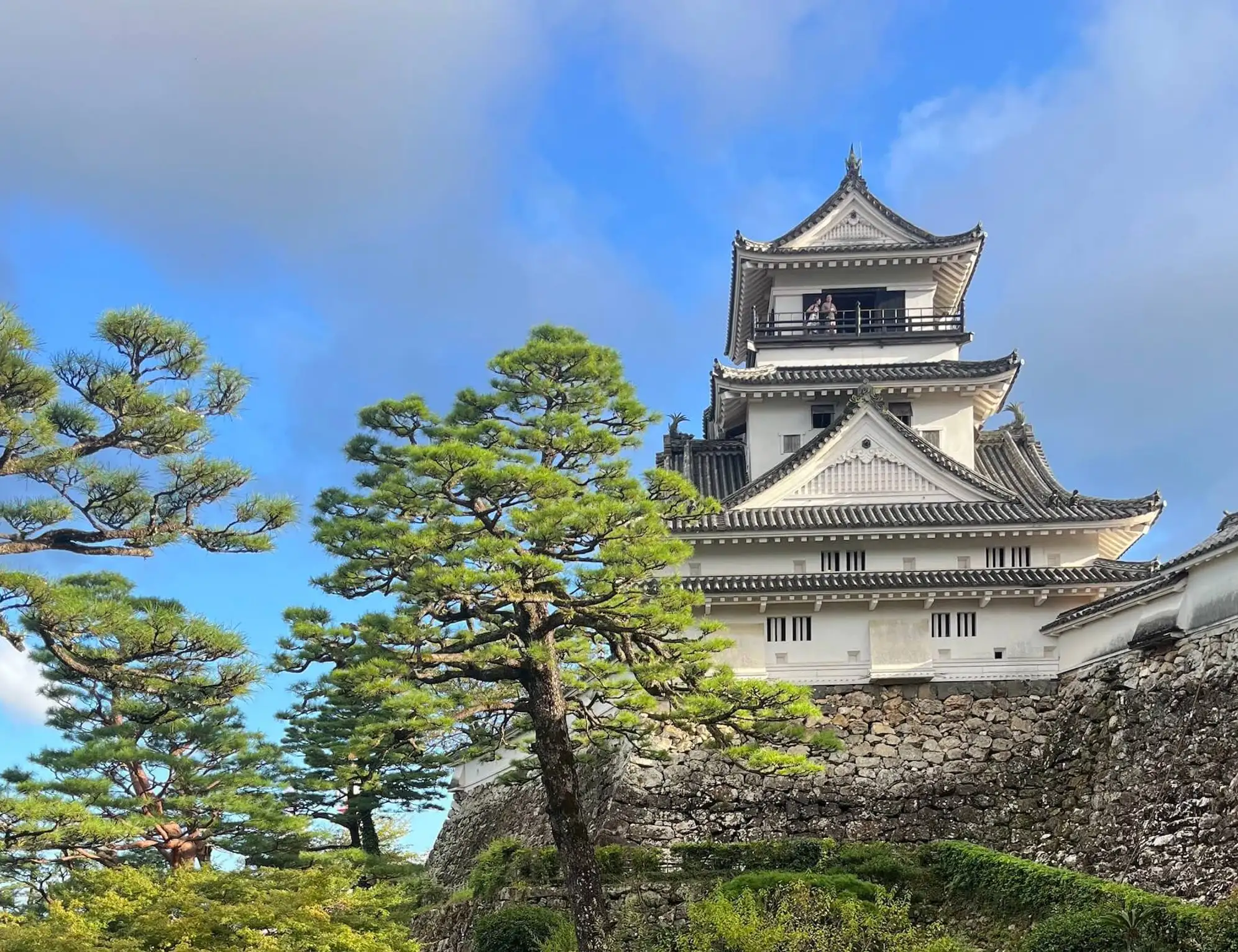
Cultural Exploration in Matsuyama and Kochi
Visit Matsuyama and Kochi, two vibrant cities with rich cultural heritage. Sample local cuisine, explore historic sites, and absorb the fascinating local culture. Kochi is famous for its 17th century castle — one of the best preserved in all of Japan, its charming Sunday market selling fresh local produce and crafts, which has continued uninterrupted for the last 300 years, and its beautiful beaches.
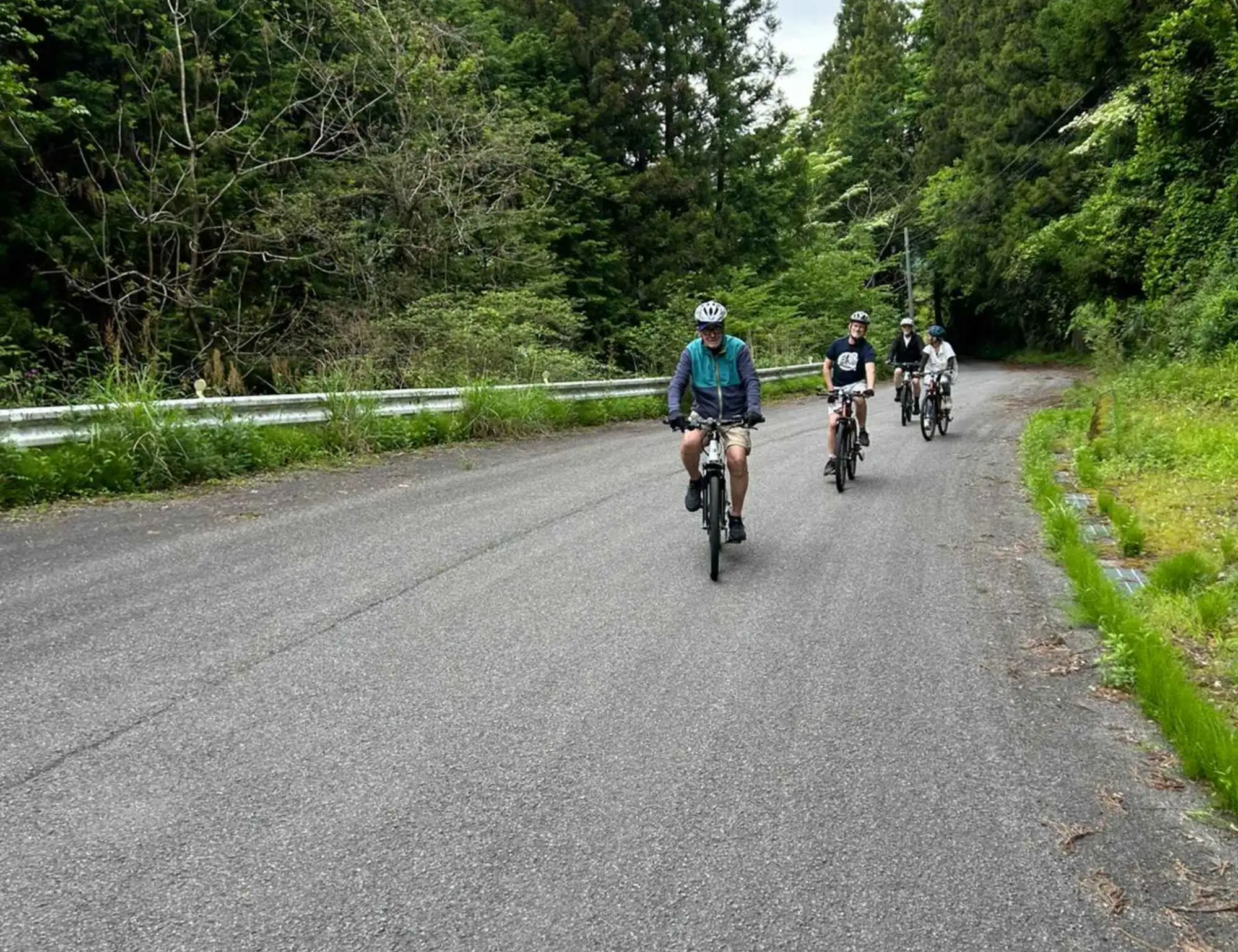
Traverse the Celebrated Iya Valley
Cycle through the celebrated Iya Valley, navigating challenging yet rewarding routes amid stunning landscapes.
Itinerary
Brief Itinerary
Meals are indicated as B = Breakfast, L = Lunch, D = Dinner.
Listed hotels are subject to availability and may be replaced with similar alternatives of equal standard.
| Day | Place | casual Inns | Meals | Distance | Activity |
|---|---|---|---|---|---|
| DAY 1 | Onomichi | Green Hills | D | ||
| DAY 2 | Imabari | Imabari Kokusai Hotel | B,D | 78 km / 48 mi | cycling |
| DAY 3 | Matsuyama | Daiwa Roynet Hotel | B,D | 60 km / 37 mi | cycling |
| DAY 4 | Yusuhara | Kumo no Ue No hotel | B,D | 60 km / 37 mi | cycling |
| DAY 5 | Kochi | JR Clement Inn | B,L | 80 km / 50 mi | cycling |
| DAY 6 | Iya | Obokekyo Mannaka | B,D | 60 km / 37 mi | cycling |
| DAY 7 | Konpira | Shikishimakan | B,D | 63 km / 39 mi | cycling |
| DAY 8 | Departure | B |
Detailed Itinerary

Day 1: Onomichi
Nestled in the heart of Hiroshima Prefecture, Onomichi is a picturesque coastal town known for its historic temples, sloping streets, and stunning views of the Seto Inland Sea. As we meet at our hotel in Onomichi at 5:00 PM, prepare to immerse yourself in the charm of this quaint town. Following an introductory meeting and bike fitting, we relish a delightful welcome dinner in one of Onomichi's inviting eateries.

Day 2: Imabari
Today we set out on a cycling adventure along the renowned Shimanami Kaido, traversing five islands to witness breathtaking panoramas and delve into the rich cultural tapestry of the Seto Inland Sea. The Shimanami Kaido, a cycling route spanning several kilometers, is a remarkable journey connecting Japan's Honshu and Shikoku islands through a series of breathtaking bridges and picturesque landscapes.
As we approach Imabari, you may be able to see the imposing Mt. Ishizuchi in the distance. Considered one of Japan's 7 sacred mountains, the 1,982 m (6,503 ft) high mountain is the highest mountain in Shikoku, and an important pilgrimage site in both Buddhism and Shintoism.


Day 3: Matsuyama
Today we conclude our ride through the scenic Shimanami Kaido and pedal along the coast to the culturally rich Matsuyama, the capital of Ehime Prefecture.
As we cycle through the city, admire landmarks like the iconic Matsuyama Castle en route to our hotel in the Dogo area. In the evening, immerse yourself in the renowned Dogo Onsen, savoring a local delicacy, tai meshi, and a glass of regional sake.

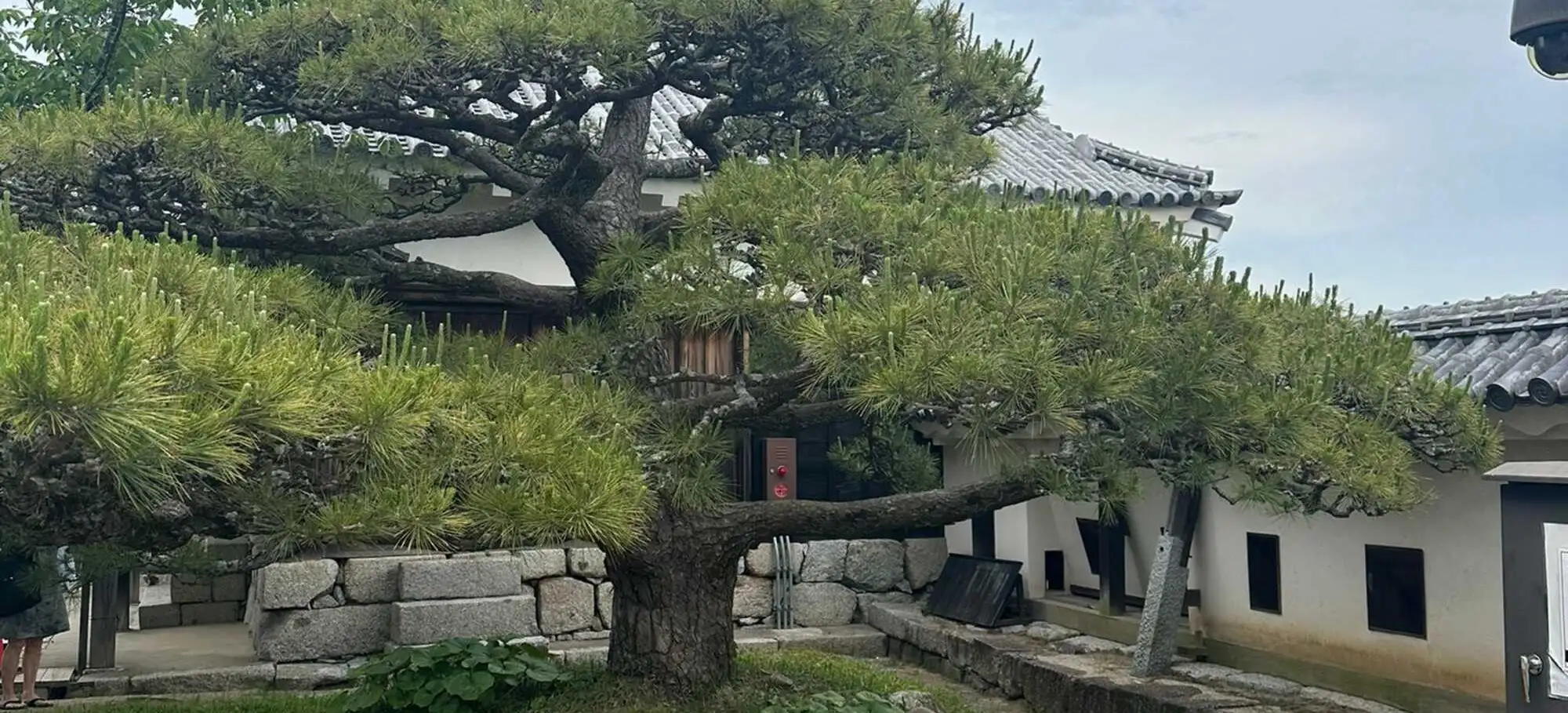
Day 4: Yusuhara
Today, we ride out into a unique and picturesque geographic marvel - the Tengu Highlands, also known as the Shikoku Karst.
Karsts or limestone mountains are rare in Japan, In fact, there are only 3 locations in all of Japan where karsts are found, and Tengu is one of them. Karsts are otherwise mostly found in Europe, and the landscape today looks like a slice of Italy in the middle of Japanese wilderness.
The Tengu highland is an elevated plateau reaching upto 1,500 m (4,921 ft) above sea level, with the peaks of the Ishizuchi mountain range we rode past still visible in the backdrop. On a clear day, we can even see the shimmering blue of the Pacific Ocean in the distance.
Our route leads us into the mountains through challenging roads, so be prepared for a bit of a climb. As we ascend, the cycling path meanders alongside a scenic river, offering picturesque views all around. Also called the "road in the sky", because the clouds above appear close enough to touch, this road is considered among Japan's 100 most beautiful roads.
Our accommodation for the night awaits in a magnificent hotel situated in Shikoku Karst, providing magnificent views amid nature's tranquility. On nights when the sky is clear, you can see the night sky lit up with thousands of sparkling stars. In fact, views of the night sky from here are among the finest in all of Japan.


Day 5: Kochi
Today is a beautiful and fun-filled day of cycling. Early on, we stop at the picturesque Nakatsu Gorge, which rises above the Nakatsu river. During fall, the bright orange and red foliage of the forests covering the surrounding hills contrast gently with the soft blue of the river waters, making for a mesmerizing sight.
We then ride over the beautiful Niyodo river, one of the clearest in all of Japan. The river's water have a slight turquoise tinge, owing to the minerals it carries down as it flows from Mt. Ishizuchi. As a result, it is also referred to as Niyodo Blue.
There are lush, forested hills on either side of the river, making for a picture-postcard view.
A characteristic feature of several Japanese rivers, especially in the countryside, are their submersible bridges, called chinkabashi in Japanese. These are flat concrete bridges without balustrades built very close to the water level so that they submerge without offering resistance when the water rises in the rainy season. Since we're riding in the dry season, we get to enjoy the pleasant views without any worries!
We stop for a barbecue-style lunch along the way and interact with friendly locals.
And after an exciting day of biking, we arrive in the vibrant city of Kochi and explore a well-known street food market, indulging in the local culinary delights.
Kochi is especially famous for its sake, or Japanese rice wine, thanks to the abundance of clear waters in its vicinity, and its excellent bonito fish, called "katsuo" in Japanese. Katsuo no takati is a must-try on any visit to Kochi.

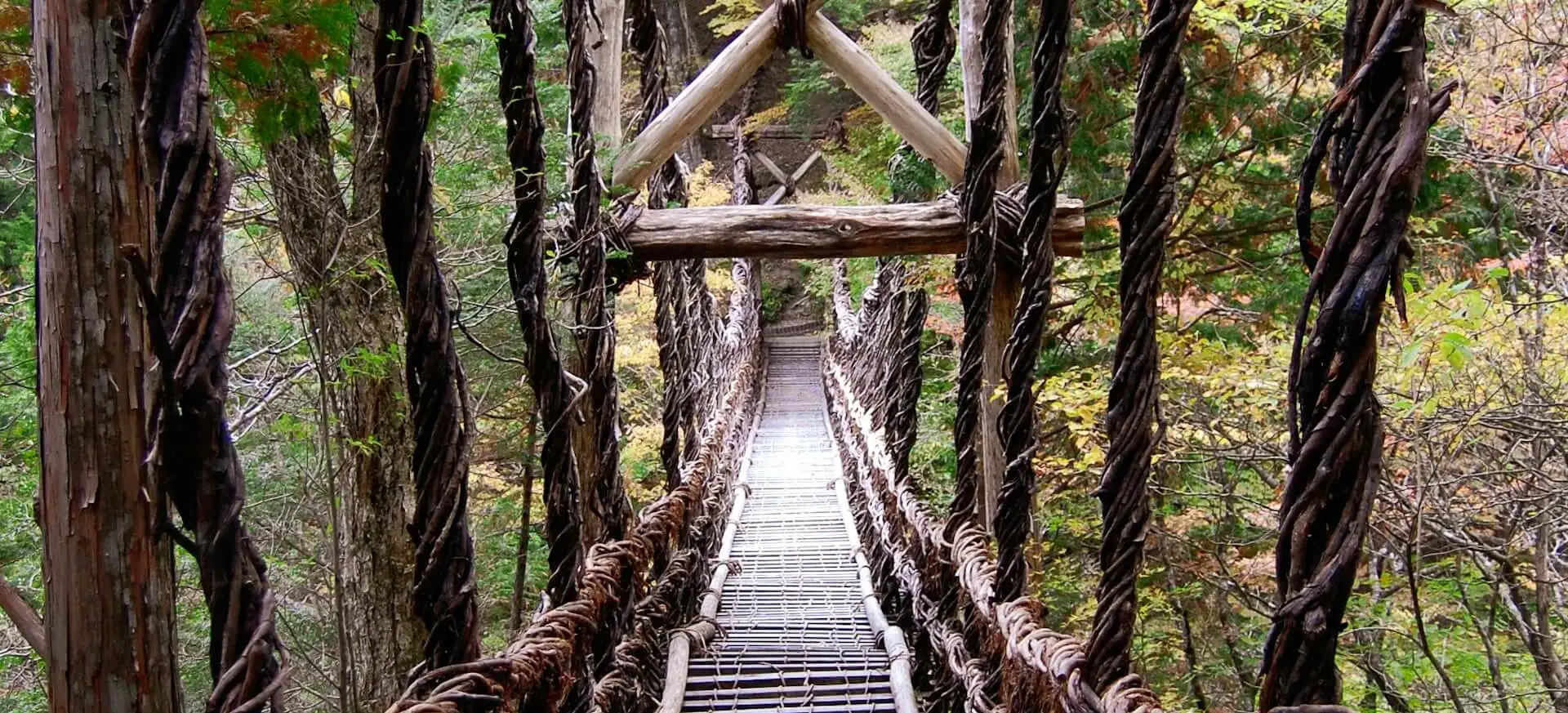
Day 6: Iya
Today we ascend into the renowned Iya Valley, characterized by steep mountainous slopes and deep gorges. We conquer a challenging climb that unveils breathtaking landscapes, then descend through the valley, enveloped by terraced rice fields, and take a stroll across the famed vine bridges of the Heike warriors.
We experience the night in a traditional Japanese inn, an accommodation that embodies stunning authenticity.


Day 7: Konpira
On the concluding day of our adventure, we travel out of the enchanting Iya Valley along the scenic Yoshino River. Following a final ascent, we reach the renowned Konpira Shrine (also called Kotohira), a popular locale and the pinnacle of our journey.
The shrine is dedicated to patron saint of sailors and seafarers in the traditional Japanese Shinto religion. It is reached by ascending over 1,300 steps. If we have the legs for it, we should climb all the way up, for the views are definitely worth the climb.
Kotohira is famous for its Udon noodles, and trying out the local Udon noodles is a must-do while in town.

Day 8: Departure
Travel further as per your onward travel plans. Nearby train stations provide connections to the bullet train, or for those traveling by air, Takamatsu Airport is located an hour and half's drive away. Alternatively, you can take the train to either Takamatsu or Okayama.
Ready to plan your adventure? Download a print-ready detailed itinerary.
Map
Dates and Prices
Book with Confidence: Enjoy peace of mind — your 20% deposit is fully refundable up to 60 days before departure. See terms & conditions.
Single Supplement
From US $350
E-Bike Upgrade
From US $250
Couldn't find a trip with convenient dates?
Open your date as a join-in tour or customize further as a private one.
Essential Info
Inclusions
LODGING
All hotels as mentioned in the tour details or similar (subject to availability).
trip leader
Expert Trip Leader(s) who look after your every need and add meaning to your vacation.
bike
Immaculately maintained bike with helmet, suited to a terrain.
shuttle
A Van support follows the group of riders and carries all belongings.
meals
Meals as per itinerary. Guests are given the opportunity to dine on their own so that they discover a location independently.
refreshments
Refreshments and mineral water during activity.
entrance
Entrance fees to most of the monuments and temples.
Exclusions
Airport pickup
We recommend to book direclty from airport.
Airport drop
We recommend to book direclty from your last hotel.
Beverages
Beverages such as alcohol, tea, coffee, juice at a hotel or restaurant.
Gratuity
Gratuities for your guide team are not included in the trip price.
Bikes
When you have a road and the thrill of a journey ahead of you, it’s imperative to have a good bike to enjoy it. Our fleet majorly consist of the below bikes as a part of this tour. However, sometimes due to height or availability constraints, we may provide a different but similar quality bike.
E-bikes are available on many of our tours, but they are not guaranteed and remain subject to availability. Our local partners maintain a limited fleet, and certain frame sizes— especially for guests below 160 cm orabove 180 cm—may be limited.
We always do our best to secure your preferred bike type, but in some destinations availability is restricted. If your exact size is not available, we will inform you in advance and offer the best possible alternative.
To improve your chances of securing an e-bike, we recommend booking early and providing accurate height details.
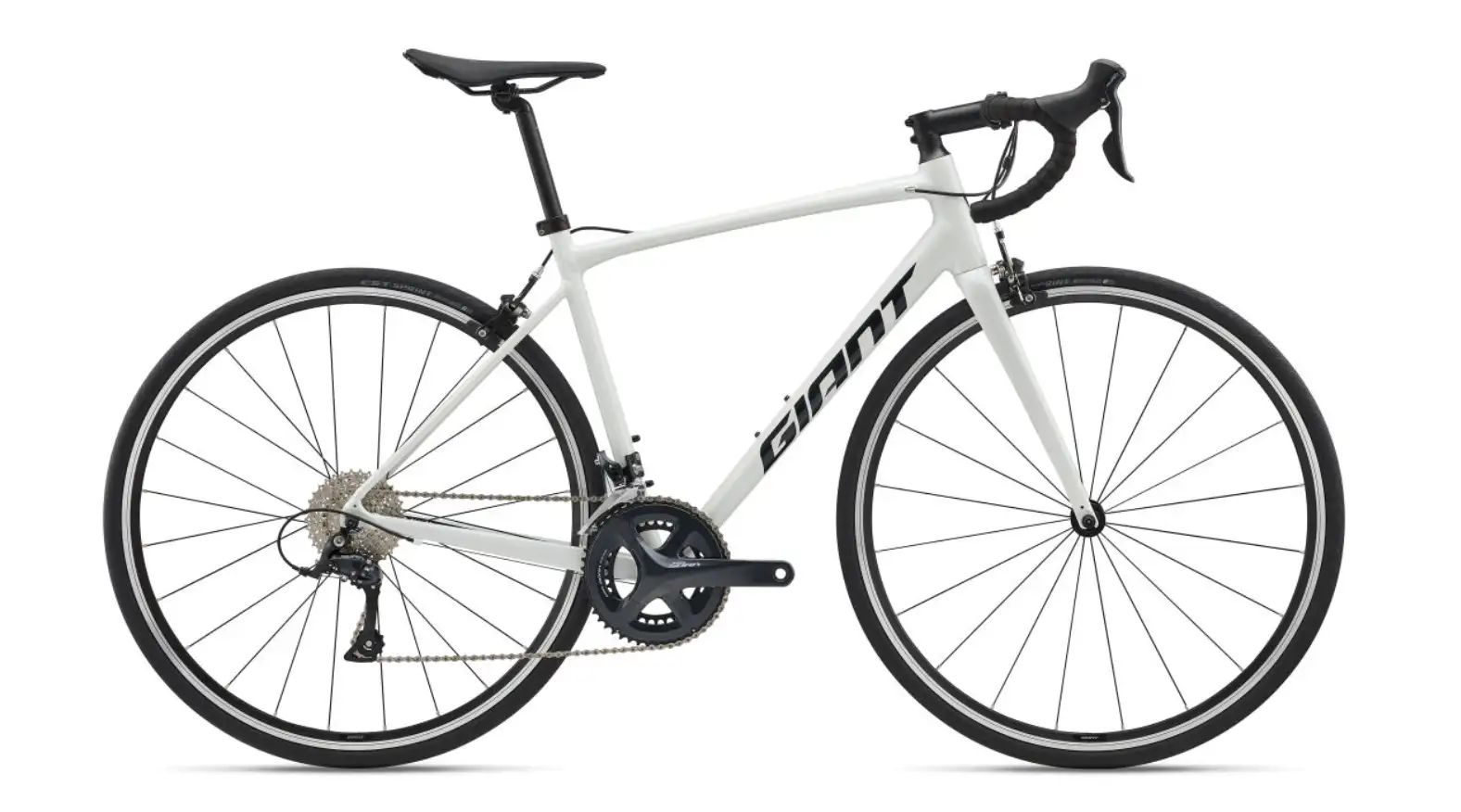
Giant Contend 1 or similar
Included in your trip price

Yamaha CROSSCORE RC or similar
Available at a surcharge
What to Expect
We want you to have a fantastic experience on your tour, so we aim to be upfront about what to expect along the way. Here are key details to keep in mind:
Japanese Tunnels
Japan is one of the most mountainous countries in the world, which makes tunnels an essential part of its road infrastructure. This tour includes up to 25 tunnels, with some stretching up to a mile in length. While passing through tunnels, cellular phone reception and mobile internet connectivity may be limited.
To ensure safety, please make sure to switch on your cycling headlights before entering any tunnel. Visibility inside can be significantly reduced, and having your lights on improves not only your ability to see but also ensures that you are visible to vehicles and other cyclists.
Accommodation:
Most of the hotels in Japan offer a mix of Japanese inns (Ryokans) and Western-style rooms. It is important to note that room assignments are subject to availability and beyond our control.
Japan is renowned for its rich cultural heritage, and two quintessential elements of this heritage are onsen and ryokans. Onsen refers to natural hot springs, which hold cultural, historical, and spiritual significance for the Japanese people. Ryokans, on the other hand, are traditional Japanese inns that offer a unique and immersive experience into the country's customs and way of life. Together, onsen and ryokans provide travelers with an opportunity to indulge in relaxation, rejuvenation, and a deep connection with Japan's past.
The combination of onsen and ryokans creates a unique travel experience that perfectly encapsulates the essence of Japan. Guests at ryokans often have access to private or communal onsen baths, allowing you to soak in the therapeutic waters while enjoying the surrounding natural beauty.
Japanese-style (Ryokans) rooms offer a unique local experience and are quite popular. They add a distinctive cultural touch to the tour. In Japan, taking public onsen hot spring in the hotel is so popular, so even nice beautiful hotels most time has rooms only with toilet.
Hence, for hotels lacking en suite bathrooms, guests are expected to utilize the communal bathing facilities.
Furthermore, depending on the hotel style, when double rooms are requested, we may only be able to secure twin rooms due to the limited availability of double beds in many Japanese hotels.
Dietary Preferences
While we do our utmost to accommodate all dietary requirements, please note that vegan and gluten-free options can be limited in some regions. We will certainly make every effort to cater to your preferences, but we recommend that guests carry some essential vegan or gluten-free staples as a backup to ensure their needs are fully met. Additionally, we encourage you to inform our guide at the start of the trip; they will be happy to assist you in sourcing suitable supplies from local grocery stores in larger towns whenever possible.
E-Bike Regulations in Japan
In accordance with Japanese regulations, e-bikes provide pedal-assist support only up to a speed of 24 km/h (15 mph). Beyond this limit, the motor will no longer offer assistance, and you’ll continue riding under your own power. This ensures a safe and enjoyable experience while complying with local laws.
Arrival & Departure Details
Arrival:
To travel from Tokyo to Onomichi (Day 1) via train, here’s a step-by-step guide:
- Take the Shinkansen (Bullet Train) from Tokyo to Fukuyama:
- Board the Tokaido-Sanyo Shinkansen from Tokyo Station to Fukuyama Station. This is the most direct route.
- Duration: Around 3.5 to 4 hours, depending on whether you take a Nozomi, Hikari, or Kodama train.
- Nozomi is the fastest but not covered by the JR Pass. Hikari and Kodama trains are slower but are JR Pass eligible.
- From Fukuyama Station, transfer to a local train on the JR Sanyo Line.
- Duration: Around 20–25 minutes to Onomichi Station.
- Arrival at Onomichi:
Once you arrive at Onomichi Station, you are in the heart of the city, close to the scenic Seto Inland Sea and famous for cycling routes like the Shimanami Kaido.
Departure
Here's how you can travel from Kotohira to Tokyo and Kyoto by train:
- Kotohira to Tokyo:
Step 1: Take the JR Dosan Line or Kotohira Line to Okayama:
- From Kotohira Station, take a local train on the JR Dosan Line (if you are using the JR Pass) or the Kotohira Line to Okayama Station.
- Duration: Around 60 to 80 minutes, depending on the specific train.
Step 2: Take the Shinkansen from Okayama to Tokyo:
- From Okayama Station, board the Sanyo Shinkansen to Tokyo. You can take the Nozomi (fastest), Hikari, or Kodama trains. Note that Nozomi is not covered by the JR Pass.
- Duration: Around 4–5 hours to Tokyo Station, depending on the train type.
- Kotohira to Kyoto:
Step 1: Take the JR Dosan Line or Kotohira Line to Okayama:
- Follow the same route as mentioned above to Okayama Station.
- Duration: Around 60 to 80 minutes.
Step 2: Take the Shinkansen from Okayama to Kyoto: -From Okayama Station, take the Sanyo Shinkansen to Kyoto Station. The journey is much shorter compared to Tokyo. -Duration: Around 1 hour.
Summary: Kotohira to Tokyo: About 5–6 hours total. Kotohira to Kyoto: About 2–3 hours total.
Both trips involve transferring at Okayama Station, where you can catch the Shinkansen for direct access to Tokyo or Kyoto.
Weather
The best time for cycling in Shikoku is typically during the spring (mid-March to early-June) and autumn (mid-September to mid-November) months when the weather is mild and pleasant, and the scenery is vibrant with blooming flowers or colorful foliage. Avoiding the hot and humid summer months is advisable for a more comfortable cycling experience. The summer months (July and August) are doable if you are used to heat and humidity.
January
Offseason
February
Offseason
March
Good
April
Best
May
Best
June
Mixed
July
Mixed
August
Mixed
September
Good
October
Best
November
Good
December
Offseason
Best
Good
Mixed
Offseason
What to Pack
Packing smart is essential for a safe and enjoyable cycling adventure. From essential biking gear to clothing and travel necessities, this guide ensures you're prepared for any terrain or climate.
Recommended Bicycling Clothes & Gear
- Bicycling shoes or stiff-soled sneakers.
- Padded cycling shorts.
- Short-fingered cycling gloves (personal gloves are ideal).
- Brightly colored cycling jerseys or synthetic T-shirts for visibility.
- Synthetic cycling socks.
- Sunglasses with UV protection.
- Personal helmet (recommended even though provided).
- Personal saddle (optional for added comfort).
- Rain jacket or windbreaker.
- Cycling water bottle (to reduce plastic waste).
Note: Helmets, gloves, and water bottles are personal items, so bringing your own is recommended for maximum comfort and hygiene.
Clothing
- Light, breathable fabrics like cotton or linen.
- Full-sleeved clothing for sun protection.
- Warm layers for chilly mornings and evenings (if traveling in winter).
- Comfortable footwear for non-cycling time.
- Bring a compact rain jacket in case of sudden weather changes.
- Ethnic or modest clothing for exploring towns and temples.
Other Necessities
- Toiletries: Basic hygiene essentials, including insect/mosquito repellent and sunscreen.
- Hand sanitizer and wet wipes.
- Plug socket adaptor.
- Binoculars for wildlife spotting or desert landscapes.
Pro Tips
- Pack light but plan for the varying temperatures: warm days, chilly evenings, and desert winds.
- Use brightly colored clothing for visibility on roads.
- Pack light to leave room for shopping.
Luggage
Please limit your luggage to one medium-sized suitcase and one carry-on bag. Mark your luggage with your name, address, and phone number.
Visa Information
Before venturing on your adventure, make sure you're equipped with essential travel advice, including security updates, local laws, and crucial passport and visa information. Start by visiting the official government website of your home country for accurate and reliable guidance:
- UK Residents: Stay informed by reviewing the Foreign, Commonwealth & Development Office (FCDO) Travel Advice.
- US Residents: Access vital travel tips and updates through the US Department of State Travel Advice.
- Australian Residents: Plan ahead with the latest updates on the Smart Traveller website.
- Canadian Residents: Find comprehensive travel and visa guidance on the Government of Canada's Travel Advice and Advisories.
- New Zealand Residents: Get practical travel advice on the New Zealand SafeTravel website
- Residents of Other Countries: Check with your government or local consulate for tailored travel advice and requirements.
Note: Passport and visa regulations can change at any time. Stay proactive by checking for the latest updates to ensure a smooth and stress-free journey.
Insurance
Medical insurance that covers medical costs in case of an accident during the trip is mandatory to participate in our tours.
We recommend to purchase adequate travel insurance in order to participate in our tours and protect yourself from unforeseen events. Our experience shows that guests who purchase travel insurance—including coverage for all activities on the itinerary, trip cancellation, interruption, delay, baggage damage, loss or theft, personal accident, death and repatriation costs, medical and emergency expenses (including Covid-19), and personal liability—travel with greater peace of mind.
Can I use my credit card insurance?
Yes, as long as it meets our requirements and provides adequate coverage. Ensure you have an emergency contact number and policy number available.
When should I buy travel insurance?
Purchase travel insurance as soon as you've paid in full or booked your flights.
Is proof of travel insurance required?
Yes. You must provide your insurer's name, policy number, and emergency contact via our reservation form. This is mandatory. If you cannot provide proof, you’ll need to purchase insurance before traveling with us.
Does Art of Bicycle Trips sell travel insurance?
We do not sell travel insurance directly, as we believe our customers should have the freedom to choose a policy that best suits their needs. However, we recommend Insured Nomads as a great starting point.
Frequently Asked Questions
A guided bike tour includes a professional local guide who rides with you throughout the trip. The guide handles navigation, manages daily logistics, ensures safety, and shares cultural insights. In addition to the guide, you also have a support vehicle that transfers luggage, provides water/snacks, and offers on-route assistance or a lift whenever needed. You simply follow the guide and enjoy a fully supported experience.
Your guides are local cycling experts, fluent in English, with deep knowledge of the region’s history, culture, and food.
On our guided tours, we ensure you begin your ride feeling comfortable and well-supported. Your guide and local team play an active role in getting your bike properly set up.
Before Your Tour
When you book, we ask for your height. This allows our local partners to select the correct frame size and prepare the bike in advance so it’s close to your ideal fit when you arrive.
At the Start of the Tour
You’ll receive a full in-person bike fitting with your guide or local representative. This typically includes:
- Adjusting saddle height
- Moving the saddle fore–aft (small adjustments to move the saddle forward or back for better balance and comfort)
- Fine-tuning handlebar height and reach (where adjustable)
- Confirming pedal preference — flat pedals are provided by default. If you bring your own clip-in pedals, our guide will help install and adjust them
- A short test ride to check comfort
Your guide will ensure everything feels right before the tour begins.
During the Tour
Throughout the trip, your guide will make additional adjustments whenever needed. This is especially helpful if you discover new comfort preferences after a few hours of riding.
What to Expect
Our guided tour bike fitting is hands-on, comfort-focused, and practical, ensuring you ride safely and enjoyably each day. It’s not a detailed workshop-level fit, but it covers all essential adjustments for multi-day touring.
Our support vehicle is always close by to make your ride worry-free. It carries your luggage, water, snacks, and spare parts, and is there if you need a quick lift or just want to rest for a while. You’ll see it at regular intervals along the route and during meal or refreshment stops. The vehicle is also used for scheduled transfers and to ensure safety and comfort along the route.
For guided tours, we do not provide GPX files separately, as navigation is handled by your guide. On certain occasions, if you prefer more independence, we may offer app-based navigation access with the daily routes loaded. However, please understand that this may not always be possible and depends on the specific tour setup.
Airport transfers are not included unless specifically mentioned in your trip inclusions.
For airport pickup, we recommend booking directly from the airport upon arrival — most airports have reliable taxi, shuttle, or app-based options.
For airport drop, please book a transfer through your last hotel — they can easily arrange it for you.
We focus on delivering exceptional experiences during your tour. For logistical simplicity and flexibility, we do not handle pre- or post-tour hotel bookings. However, we’re happy to share a list of recommended hotels near the starting and ending points of your trip so you can plan your stay independently.
The fitness level required for each trip is indicated by the "level" of the tour, which in turn is mentioned on each tour page right next to the price and the trip duration.
Easy: The terrain is mostly flat with a few gentle climbs.
Moderate: The terrain is either mostly flat or consists of rolling hills with a few challenging climbs. There could also be a few days with longer riding distances of up to 75 kms (45 miles)
Difficult: The terrain is mostly hilly with strong elevation gains and/or has long days on the bike. Such trips are recommended for intermediate to advanced cyclists.
Please note that we usually bike around 4-5 hours per day irrespective of the level of the trip.
Our tours in Japan feature a mix of traditional Japanese inns (ryokans) and Western-style hotels. Room assignments are subject to availability and may vary from place to place.
Japan’s cultural heritage is beautifully reflected in its onsen (natural hot springs) and ryokans. Staying in a ryokan offers an immersive experience, with tatami-mat rooms, traditional décor, and access to communal or private hot spring baths. Onsens are an important part of Japanese culture, valued for relaxation, healing, and their historical significance.
Please note that:
- Ryokan rooms often do not have en suite showers or baths. Even in upscale properties, many rooms include only a toilet, with guests expected to use the communal onsen bathing facilities.
- Double beds are limited in many Japanese hotels. When double rooms are requested, we may only be able to secure twin rooms depending on availability.
Ryokans and onsens add a unique and memorable cultural dimension to your trip, offering an authentic and restorative Japanese experience.
Yes, please communicate your dietary preferences to your trip leader and they'll ensure that the food you eat is as per your requirements.
Yes — we do our best to support all dietary requirements. However, please note that vegan and gluten-free options can be limited in certain regions of Japan, especially in smaller towns. We will make every effort to cater to your needs, but we strongly recommend bringing a few essential vegan or gluten-free staples as a backup.
At the start of your trip, please inform your guide of your dietary preferences. They will be happy to help you identify suitable meals and assist in sourcing appropriate supplies from local grocery stores in larger towns whenever possible.
Most of this trip is on double-lane paved tarmac roads with very less traffic.
We've designed this itinerary such that most of the cycling happens on quieter countryside roads far from busy traffic. The shuttle transfers on this tour have been strategically planned to bypass busy vehicular traffic.
While your tour price covers most common expenses, a few meals not included in the itinerary may require additional spending. As a general guideline, you can budget approximately US $25 per person per day for these extra expenditures.
Tips are not included in your tour price.
As a general rule, you may tip US$ 15-25 per person per day.
This figure is for the entire crew including the trip leader, the driver, and other support staff.
However, you are not obligated to tip, and you can always tip less or more than the above amount depending on the level of service you received on tour.
It is usually the norm to tip the tour guide, who then distributes the amount among the entire crew. However, you can also tip each individual member of the crew if you so desire.
In case you want to tip the staff at a hotel such as porters, you may pay them US $2-3 per day.
You can exchange currency at the currency exchange kiosks in Japanese airports, or you can use your credit card at ATMs at convenience stores such as 7/11 in major Japanese cities to withdraw JPY. Many Japanese commercial establishments still prefer cash, so its good to have some local currency with you when cycling in Japan.
Yes, you may wear riding shorts while riding your bike. When not cycling, it would be advisable to wear comfortable full-length pants. We recommend keeping a pair of comfortable pants handy in you support van.
When visiting temples and monuments, visitors should wear full-length, loose-fitting pants. Holy places of certain religions may also require covering your head. Your guide will inform of the dress etiquette required for visiting specific religious places.
The meeting time on Day 1 is mentioned in your travel planner shared with you. You can arrive either on the morning of Day 1 depending on the meeting time, or book a pre-tour night to arrive a day earlier.
We don't have anything planned for the last day, so you are free to depart at your discretion.
Reviews from our friends
You may also like
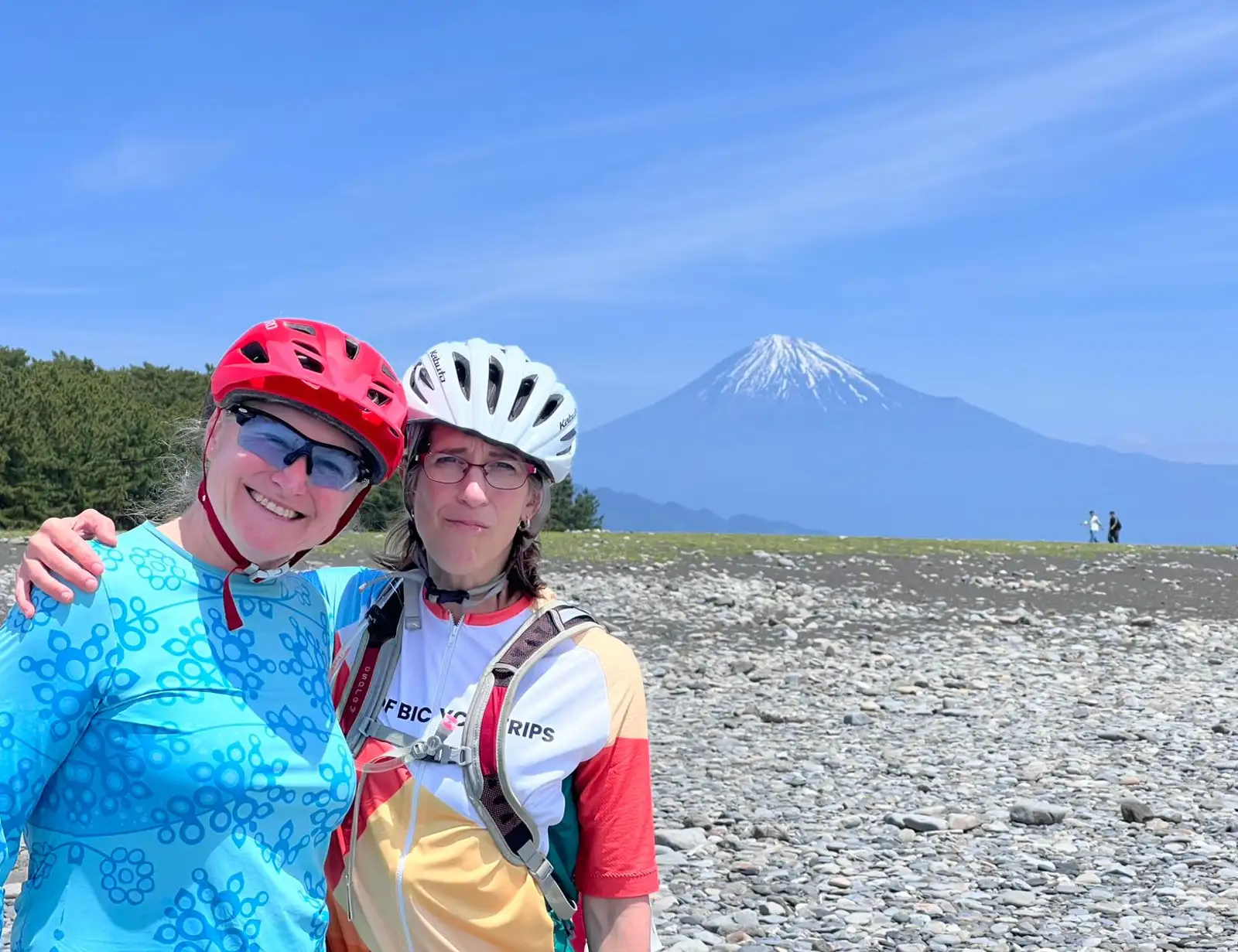
Popular
Guided Mt. Fuji to Samurai Coast Bike Tour
8 daysfrom$4,395/person
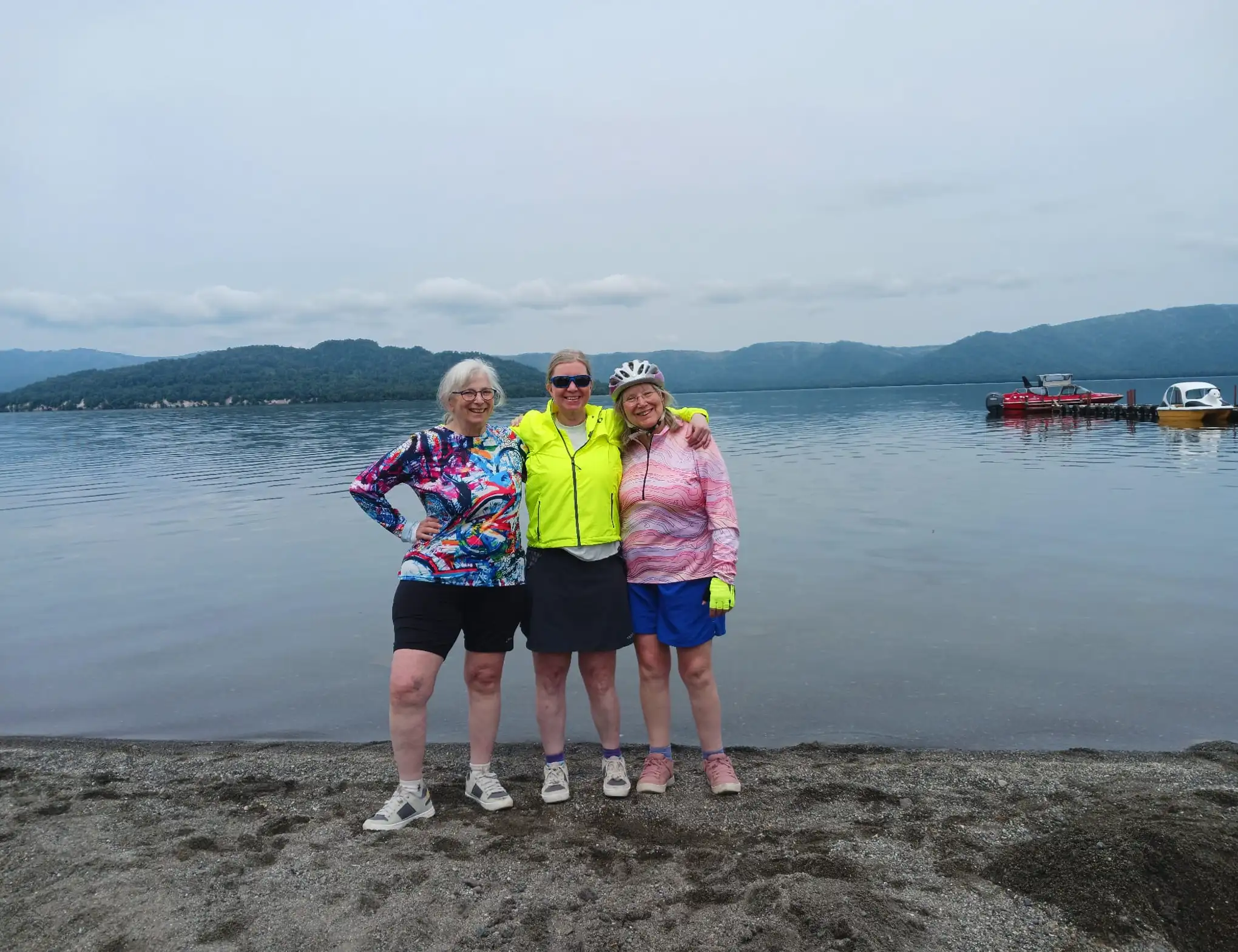
Popular
Guided Off-Beat Eastern Hokkaido Bike Tour
8 daysfrom$4,995/person
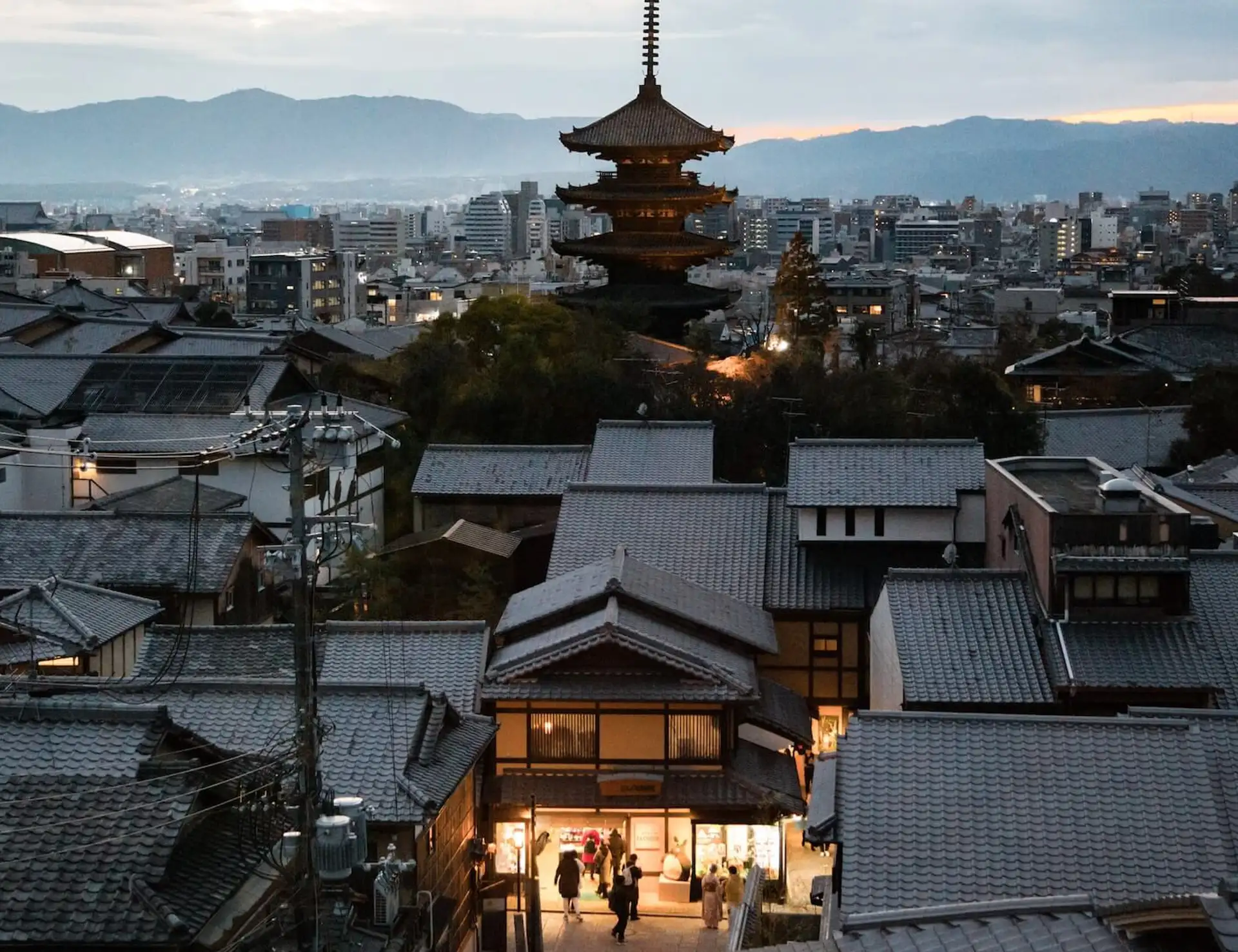
Popular
Guided Kyoto to Sea of Japan Bike Tour
8 daysfrom$4,595/person

